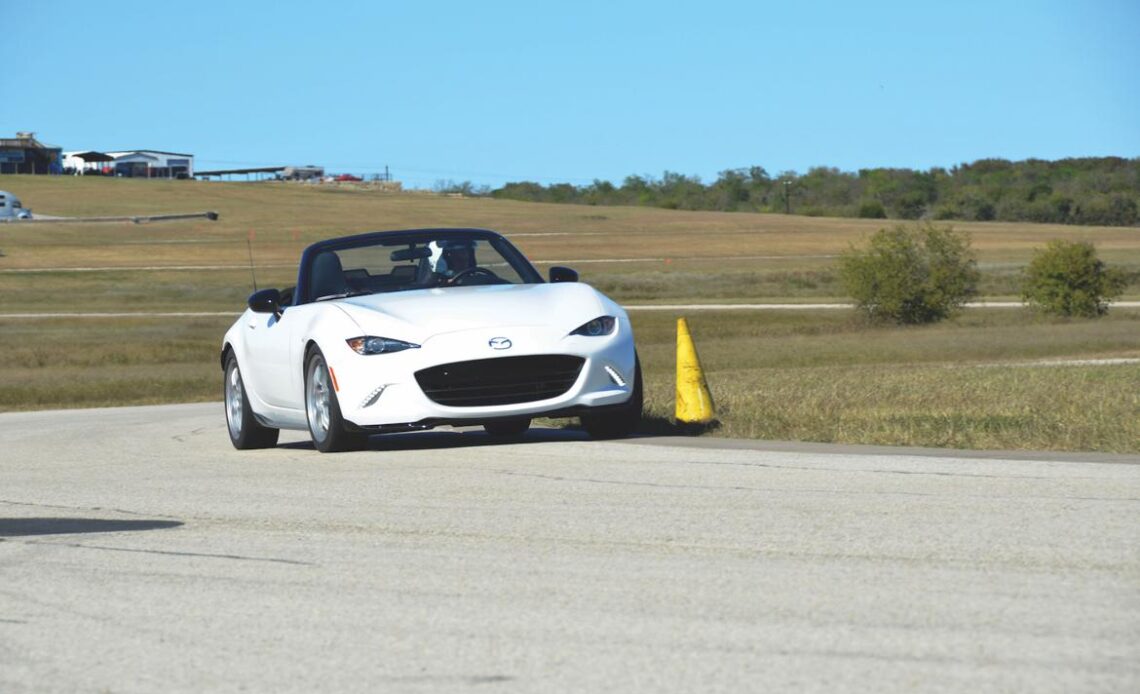Mazda introduced its latest generation of Miata to a fanfare of enthusiast accolades. Returning to its roots with a lightweight, nimble car packing “just enough” power gave Mazda a winner.
Its impact on the motorsports world was immediate at all levels, from the single-make professional Global MX-5 Cup series all the way to SCCA cone-dodging. This ND-generation Miata was also regularly found on road courses as a high-value track toy. And nothing could beat the lithe roadster for Sunday drives on twisty roads for relaxing and exhilarating.
We quickly added a new-for-2016 MX-5 to our fleet–one of the Brembo brake-equipped Club editions–and turned it into a triple threat, equally adept at autocross, circuit use and comfortable cruising.
As great as that car was, one feature stood out as half-baked: the 2.0-liter engine. It certainly delivered solid torque, but seemed to choke on itself in the upper reaches of the rpm range. In contrast to the rev-happy, 1.5-liter unit powering ND Miatas in other parts of the world, this one smacked of grocery-getter grunt.
We’d later learn that the 2.0 was a bit of an afterthought, quickly sourced from the Mazda3 and pressed into service as a stopgap for the U.S. market. Even as the new cars were launched, Mazda’s engineers were working diligently on refining the 2.0 into a more appropriate roadster engine. That updated engine–the most powerful and flexible Miata engine ever–made its debut for 2019. So we got the updated car, another Club model fitted with the bigger Brembo brakes. New, that’s about a $30,000-plus purchase; used, figure a bit less.
Measuring Up
We first wanted to quantify the value of the new engine on track. How would that bump from 155 to 181 horsepower feel?
We transferred over all of our C Street-legal autocross parts–Koni dampers, Karcepts anti-roll bar, Good-Win Racing RoadsterSport muffler, Pagid Racing brake pads, 17×7-inch Enkei RPF1 wheels, and 225/45R17 Bridgestone RE-71R tires–and performed an alignment. Then we headed off to Harris Hill Raceway to see what we had. We’d driven hundreds of laps there in our previous-gen car, so consistency would not be an issue.
To simulate a back-to-back test, we first drove the new car as if it were the original ND, shifting…
Click Here to Read the Full Original Article at Grassroots Motorsports Online Articles…

